[Click on BLUE links for sources and more information]
The business of America is business Calvin Coolidge
“We didn’t elect a saint.” I’m so tired of the religious right dragging out this sorry explanation for their unwavering support of our embarrassing President. And, why do so many so-called Republicans fawn over this twittering fool? It’s dangerously reminiscent of the phrase referring to Mussolini that at least he made the trains run on time. The hypocrites who preach family values and fiscal conservatism should simply come out with their true agenda, expelling as many nonwhites as possible and putting those who stay in their proper place, spending as much as possible on foolish walls and wars, and dismantling the safety net that protects us from unfettered greed not to mention throwing fear of debt to the wind. Why carry on with the charade of compassionate conservatism when they are neither compassionate nor conservative?
Gekko: Well, ladies and gentlemen, we’re not here to indulge in fantasy, but in political and economic reality. America, America has become a second-rate power. It’s trade deficit and its fiscal deficit are at nightmare proportions. Now, in the days of the free market, when our country was a top industrial power, there was accountability to the stockholder. The Carnegies, the Mellons, the men that built this great industrial empire, made sure of it because it was their money at stake. Today, management has no stake in the company!
Michael Douglas as Gordon Gekko in Wall Street
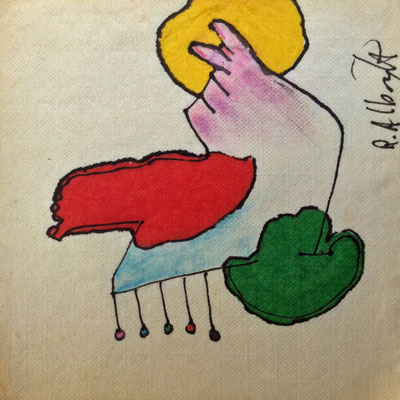
Sea Gull Cellar Bar Napkin Art, Richard Albright artist
Our porn-crazed President has in his first year and two months done his best to dismantle and destroy the federal agencies that we created to protect us from those whose only idol is mass marketing, whose God is mammon, and who turn the other cheek only when Trump is trumping.
Marketing: At the end of the 1920s, advertising beat the drum to spread marvelous news: “Fly, don’t ride.” Leaded gasoline made you go faster, and going faster meant getting ahead in life. The ads showed a car going at a snail’s pace, and the embarrassed child inside: “Gee, Pop, they’re all passing you!” Gasoline with lead additives was invented in the United States, and from the United States a barrage of advertising imposed it on the world. In 1986, when the U.S. government finally decided to outlaw it, the number of victims of lead poisoning around the planet was incalculable. It was known all along that leaded gasoline was killing adults in the United States at a rate of five thousand a year, and causing irreparable damage to the nervous systems and mental development of millions of children. The principal authors of this crime were two executives from General Motors, Charles Kettering and Alfred Sloan. They have gone down in history as generous benefactors of humanity. They founded a hospital.
Eduardo Galeano: Mirrors: Stories of Almost Everyone
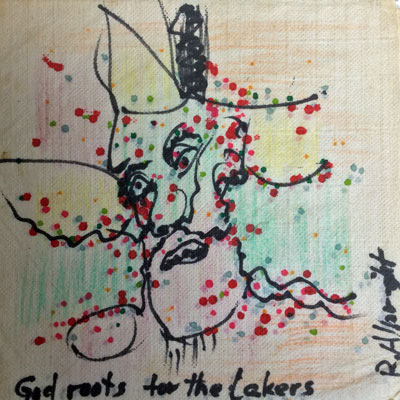
Sea Gull Cellar Bar Napkin Art, Richard Albright artist
Everywhere today we find art and science challenged by that oxymoron reality TV. Art and science struggled through the Middle Ages, blossomed again during the Renaissance and now find themselves befuddled by a new Dark Age. Americans today seem all too ready to give up their birthright of political freedom to, as the Roman poet Juvenal said, bread and circuses.
I am not a destroyer of companies. I am a liberator of them! The point is, ladies and gentlemen, that greed – for lack of a better word – is good. Greed is right. Greed works. Greed clarifies, cuts through, and captures the essence of the evolutionary spirit. Greed, in all of its forms – greed for life, for money, for love, knowledge – has marked the upward surge of mankind. And greed – you mark my words – will not only save Teldar Paper, but that other malfunctioning corporation called the USA.
Michael Douglas as Gordon Gekko in Wall Street
Eduardo Galeano’s book Mirrors: Stories of Almost Everyone is where I go to find solace during these trying times. For example, listen to what he says about America and Americans. You will see where the current political atmosphere goes so dreadfully wrong.
Americans: Official history has it that Vasco Núñez de Balboa was the first man to see, from a summit in Panama, two oceans at once. Were the natives blind? Who first gave names to corn and potatoes and tomatoes and chocolate and the mountains and rivers of America? Hernán Cortés? Francisco Pizarro? Were the natives mute? The Pilgrims on the Mayflower heard Him: God said America was the promised land. Were the natives deaf? Later on, the grandchildren of the Pilgrims seized the name and everything else. Now they are the Americans. And those of us who live in the other Americas, who are we?
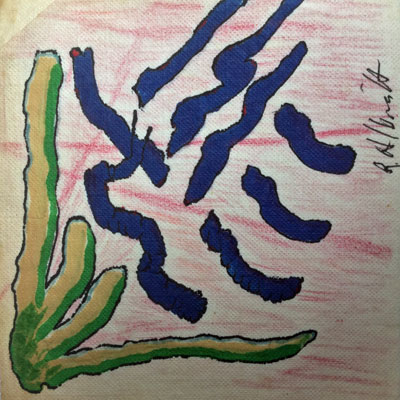
Sea Gull Cellar Bar Napkin Art, Richard Albright artist
The artists, the scientists, the storytellers … Galeano speaks of them all in his wonderful book in short, precise vignettes. No worries, the artists and scientists are coming back again and I’m not talking about the Gargantua and Pantagruel of Rabelais. See me, feel me, touch me, heal me … WHO?
The fact is, business in its proper place is essential if we are to live and eat. But living and eating are the basics. We don’t live to eat but we eat to live. Or we should in my opinion. And living a full life requires far more than the greed of Gordon Gekko as Dudley Moore and Russell Brand discover in their two different versions of Arthur (the movie). Neither money nor even beauty are the true philosopher’s stone. Whatever that is eludes us, especially today.
I remember you well in the Chelsea Hotel
You were famous, your heart was a legend
You told me again you preferred handsome men
But for me you would make an exception
And clenching your fist for the ones like us
Who are oppressed by the figures of beauty
You fixed yourself, you said, “Well, never mind . …
We are ugly but we have the music”
Leonard Cohen, Chelsea Hotel #2
Five more pieces from Mirrors by Eduardo Galeano round out the point I hope I’m making.
Origin of Beauty
“There they are, painted on the walls and ceilings of caves. Bison, elk, bears, horses, eagles, women, men, these figures are ageless. They were born thousands upon thousands of years ago, but they are born anew every time someone looks at them. How could our ancestor of long ago paint so delicately? How could a brute who fought wild beasts with his bare hands create images so filled with grace? How did he manage to draw those flying lines that break free of the stone and take to the air? How could he? . . . Or was it she?”
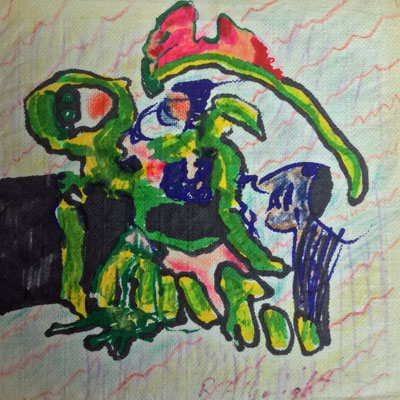
Sea Gull Cellar Bar Napkin Art, Richard Albright artist
Leonardo
When he was twenty-five, the watchdogs of public morality known as the Officers of the Night took Leonardo from the workshop of his teacher Verrocchio and plunked him in a cell. Two months he spent there, unable to sleep or breathe, terrified by the prospect of the stake. Homosexuality was punished by fire, and an anonymous tip accused him of “committing sodomy in the person of Jacopo Saltrelli.” He was absolved for lack of evidence, and restored to life. Then he painted master works, nearly all of them unfinished, which were the first to make use of sfumato and chiaroscuro, he wrote fables, legends, and recipes, he sketched the organs of the body perfectly for the first time, having studied anatomy from cadavers, he proved that the world turned, he invented the helicopter, the airplane, the bicycle, the submarine, the parachute, the machine gun, the grenade, the mortar, the tank, the moving crane, the floating dredger, the spaghetti-making machine, the bread mill . . . and on Sundays he bought birds in the market and opened their cages. Those who knew him said he never embraced a woman. Yet from his hand was born the most famous portrait of all times. A woman.
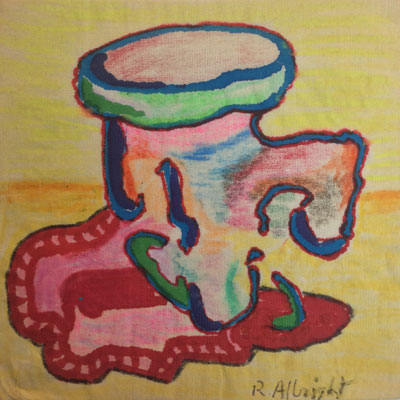
Sea Gull Cellar Bar Napkin Art, Richard Albright artist
The Mother of All Storytellers
To avenge a woman who betrayed him, a king killed them all. At dusk he married and at dawn he widowed. One after another, the virgins lost their virginity and their heads. Scheherazade was the only one to survive the first night, and then she continued trading a story for each new day of life. Stories she heard, read, or imagined saved her from decapitation. She told them in a low voice, in the darkness of the bedroom, with no light but that of the moon. In the telling she felt pleasure and gave pleasure, but she tread carefully. Sometimes, in the middle of a tale, she felt the king’s eyes studying her neck. If he got bored, she was lost. From fear of dying sprang the knack of narrating.
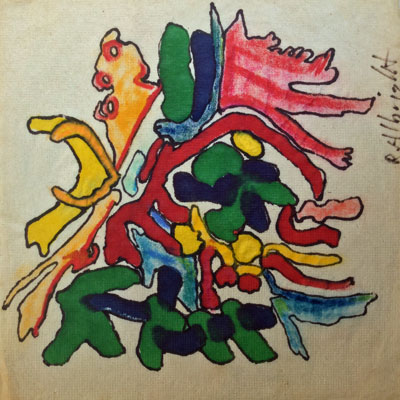
Sea Gull Cellar Bar Napkin Art, Richard Albright artist
Resurrection of Vermeer
His works were worthless when he died. In 1676 his widow paid the baker with two paintings. Vermeer van Delft was sentenced to oblivion. Two centuries passed before he returned to the world, rescued by the impressionists, hunters of light. Renoir said his portrait of a woman making lace was the most beautiful painting he had ever seen. Vermeer, chronicler of triflings, painted only his home and a bit of the neighborhood. His wife and daughters were his models, and domestic chores were his subjects. Always the same, never the same: in the household routine, Vermeer, like Rembrandt, knew how to unveil the suns that the dark northern sky denied him. In his paintings there are no hierarchies. Nothing and no one is more or less luminous. The light of the universe vibrates, secretly, as much in the glass of wine as in the hand that offers it, in the letter as much as in the eyes that read it, in a worn tapestry as much as in the unworn face of the girl watching.
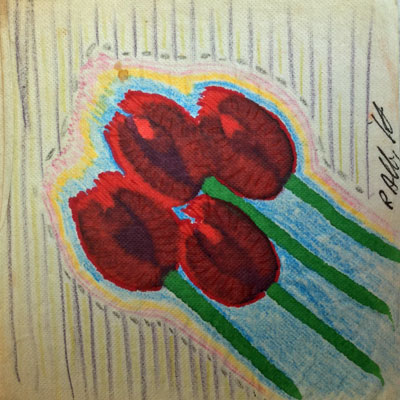
Sea Gull Cellar Bar Napkin Art, Richard Albright artist
Resurrection of Arcimboldo
They celebrated him because they did not understand him. His paintings looked like amusement parks. And that was how the pagan artist managed to survive and live in luxury. Arcimboldo indulged in the mortal sin of idolatry, exalting human communion with wild exuberant nature. His portraits, said to be inoffensive and playful, in actual fact were ferocious mockery. When he died, art’s memory suppressed him like a nightmare. Four centuries later, he was resuscitated by the surrealists, his belated children.
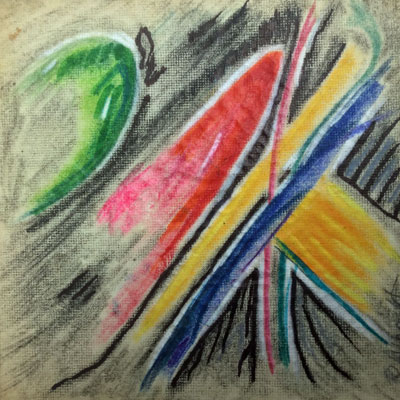
Sea Gull Cellar Bar Napkin Art, Richard Albright artist

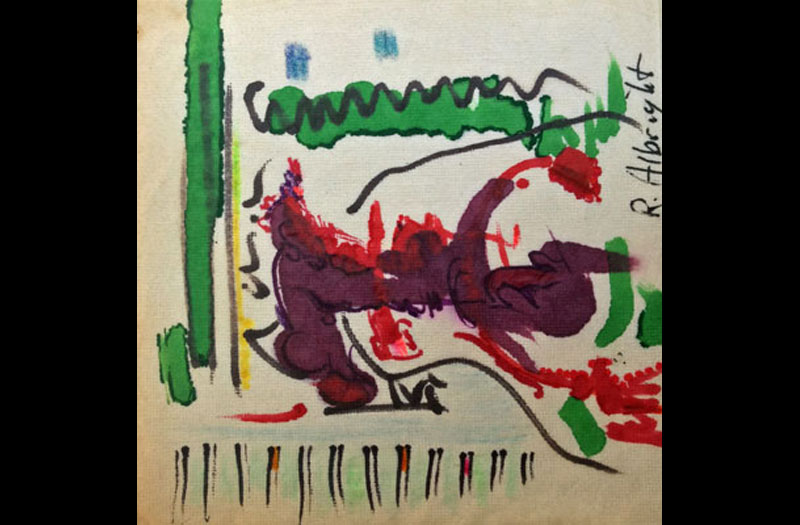
A complex person, open artist, a funny man wise to the world, sometimes unreachable, authentic, impossible, trustworthy save for his desires but up to a point where society had to step in. Totally human this Richard Albright, much too intelligent for his own good. We wouldn’t/couldn’t protect him from himself.